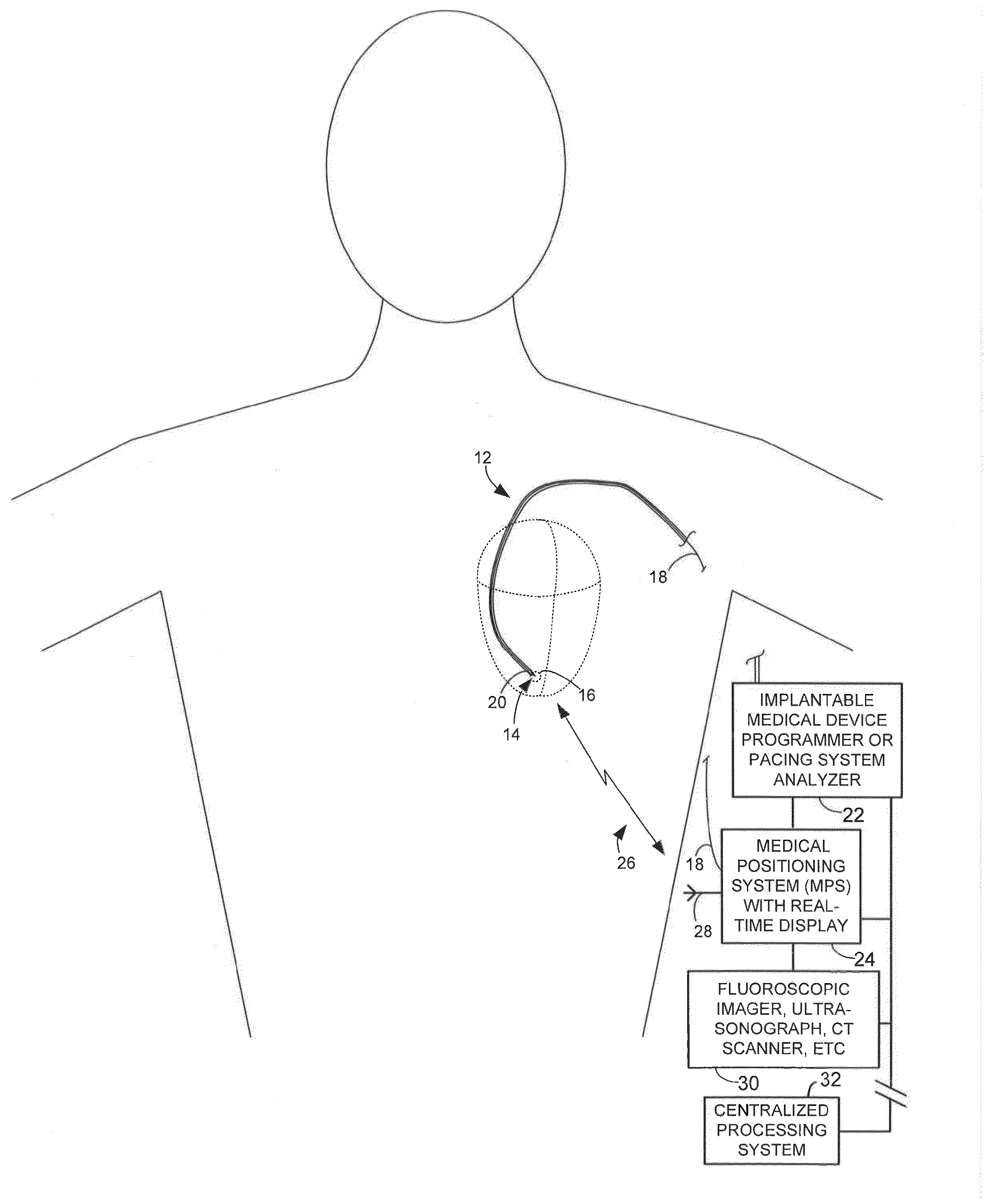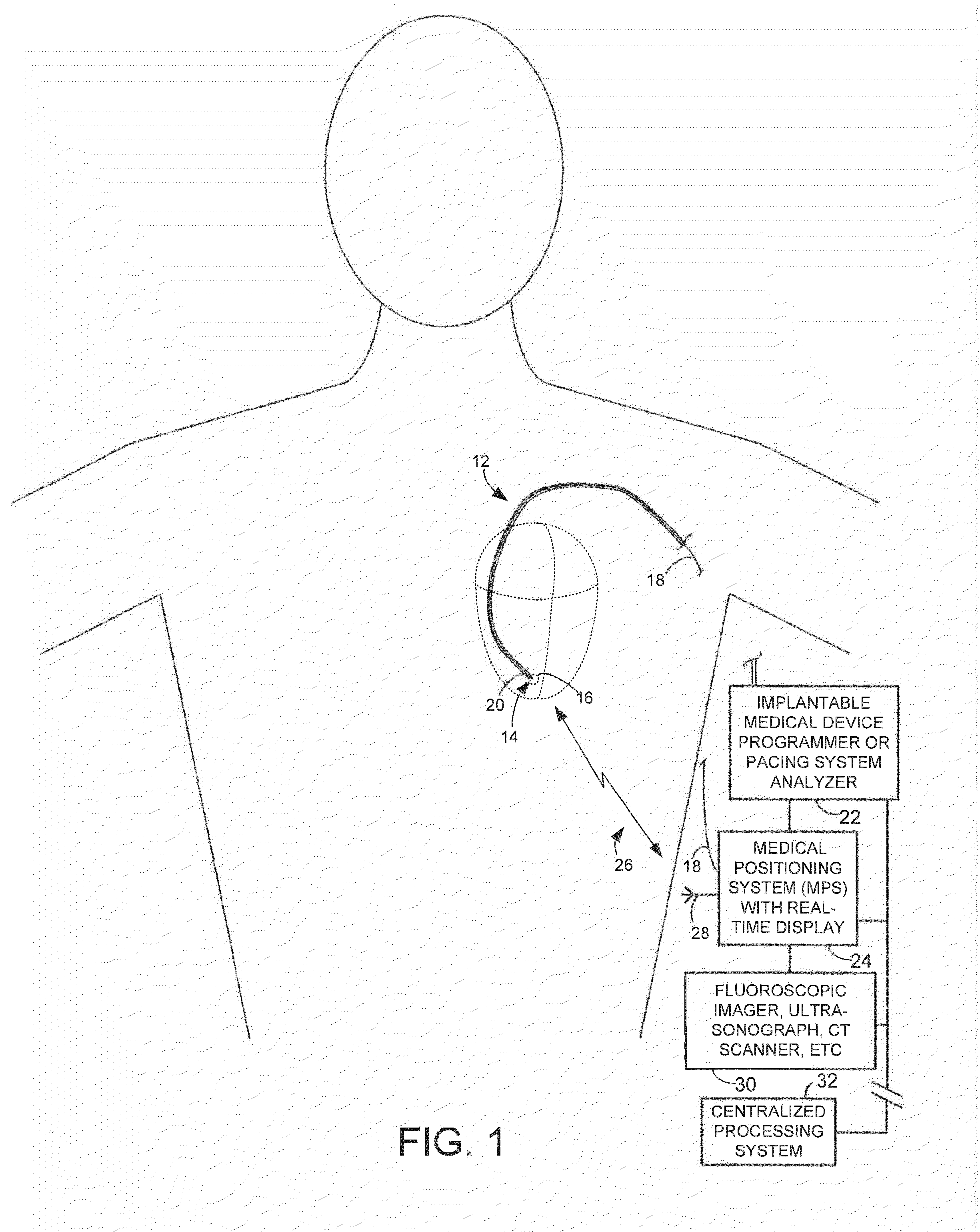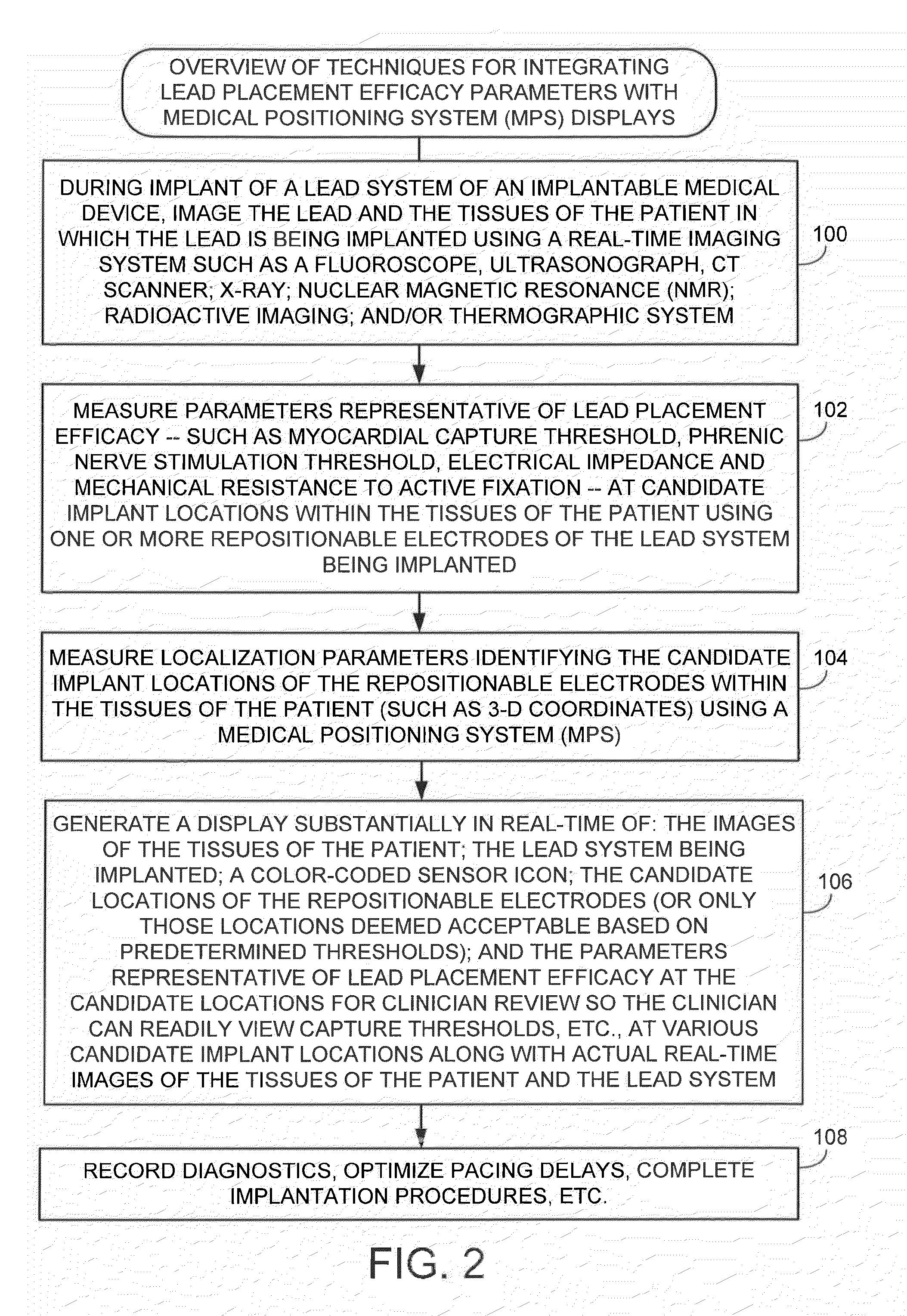System and method for integrating candidate implant location test results with real-time tissue images for use with implantable device leads
a technology for implantable devices and test results, applied in the field of systems, can solve the problems of multiple fixations around the same area, damage to tissue at the site, and difficulty for clinicians to know exactly which locations have already been tested, so as to facilitate the visualization of lead parameters and avoid cluttering the image
- Summary
- Abstract
- Description
- Claims
- Application Information
AI Technical Summary
Benefits of technology
Problems solved by technology
Method used
Image
Examples
Embodiment Construction
[0019]The following description includes the best mode presently contemplated for practicing the invention. This description is not to be taken in a limiting sense but is made merely to describe general principles of the invention. The scope of the invention should be ascertained with reference to the issued claims. In the description of the invention that follows, like numerals or reference designators will be used to refer to like parts or elements throughout.
Overview of Systems and Methods
[0020]FIG. 1 provides a stylized illustration of pertinent portions of an implantable medical lead 12 having an active fixation tip electrode 14 for implant into the RV of the heart of a patient, with the lead shown positioned at a candidate implant location 16. (Note that, for clarity and simplicity, not all of the features of the RV lead are shown, such as its ring electrode or its shocking coil electrode or any physiological sensors that might be mounted to the lead. Also, note that other lea...
PUM
 Login to View More
Login to View More Abstract
Description
Claims
Application Information
 Login to View More
Login to View More - R&D
- Intellectual Property
- Life Sciences
- Materials
- Tech Scout
- Unparalleled Data Quality
- Higher Quality Content
- 60% Fewer Hallucinations
Browse by: Latest US Patents, China's latest patents, Technical Efficacy Thesaurus, Application Domain, Technology Topic, Popular Technical Reports.
© 2025 PatSnap. All rights reserved.Legal|Privacy policy|Modern Slavery Act Transparency Statement|Sitemap|About US| Contact US: help@patsnap.com



